Counterfeit Detection: 1809 Cent
Posted on 7/13/2021
The US Mint issued the Classic Head Cent series from 1808 to 1814. Generally, these coins can sell for hundreds if not thousands of dollars. Lower-quality copper was used to create the blanks, so many were not in great shape to start with. Over two centuries later, most examples available to collectors have either lower numeric grades or Details grades.
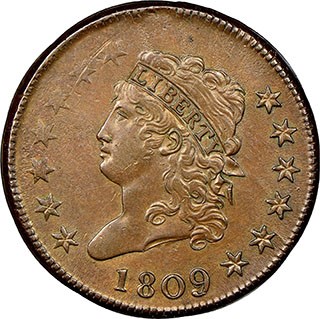 |
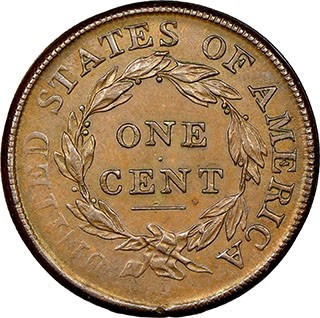 |
| Genuine 1809 Cent. Click images to enlarge. |
|
For the 1809 Cent, NGC has certified about 125 examples with a Details grade in addition to numerically grading about 80 examples — with two-thirds of these NGC VF 35 or lower. Strong demand for coins generally found in modest conditions can give counterfeiters an opportunity. NGC recently encountered an 1809 Cent forgery.
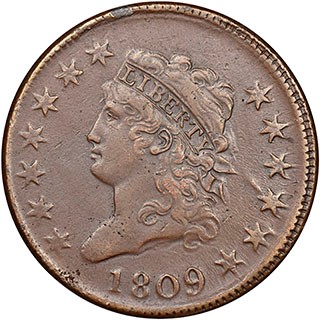 |
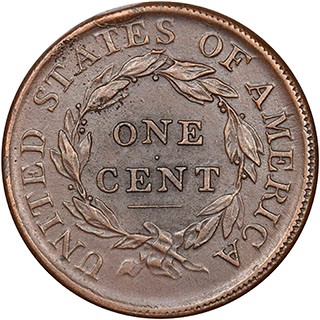 |
| Counterfeit 1809 Cent. Click images to enlarge. |
|
One of the first steps in authenticating a coin is to weigh it. In this case, the counterfeit is 12.72 grams, far above the expected 10.9 grams. A metallurgical analysis of the coin reveals why: It is roughly half lead, a much denser metal than the copper that it should be made of. Additionally, when lightly tapped with the side of a pen, a normal struck coin will ring, whereas an electrotype will not.
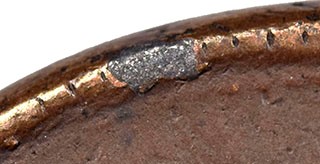 |
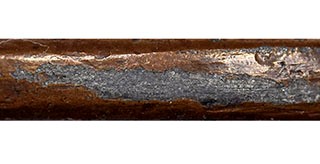 |
| Closeup views of counterfeit 1809 Cent. Click images to enlarge. |
|
The surfaces of the counterfeit are oddly textured and the coin lacks the normal die flow lines seen on a coin struck from a die. But the real nail in the coffin for this piece is the lead peeking out from beneath a thin copper shell in a few places. This can be seen at the top of the obverse as well as on the edge of the coin.
This type of fake is called an electrotype. It is created by pressing a genuine piece into a soft material to create a negative impression. That impression is then electroplated. The process is repeated for the other side of the coin. Those two halves are then joined together and filled with metal for weight. Electrotypes can be very difficult to spot, although sometimes there is a seam running along the edge of the coin where the sides were joined together.
A coin does not have to be made of a precious metal to be a target for a counterfeiter. In fact, three of the top 10 coins on NGC’s list of most commonly counterfeited US coins are Lincoln Cents. Regardless of a coin’s composition, NGC backs its determinations of authenticity and grade with the NGC Guarantee.
Did you know? NGC has created a comprehensive Counterfeit Detection resource to help collectors and dealers identify counterfeit and altered coins. Visit NGCcoin.com/counterfeit.
Stay Informed
Want news like this delivered to your inbox once a month? Subscribe to the free NGC eNewsletter today!
